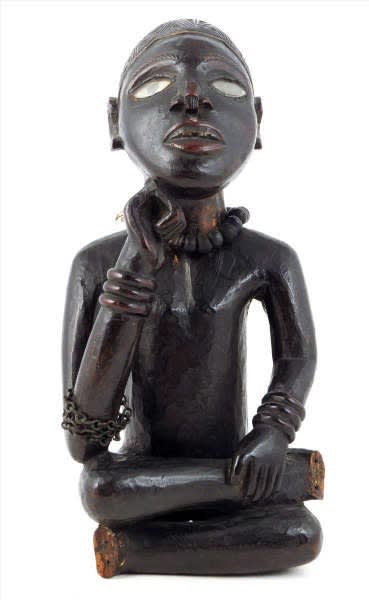
One of the lessons of last year was the fact that if an object had quality, it didn’t matter how obscure the auction was, it would reach the same price as it would do in Paris or New York. This was shown again last Tuesday, when Woolley & Wallis in Salisbury (England) sold the above Yombe figure at ten times it lowest estimate. Appraised at £ 4,000 – 6,000, it was hammered down at £ 44,000. More info and pictures here.
These great commemorative effigies of Yombe chiefs are very rare and are celebrated highlights in several major institutions, such as the Metropolitan Museum of Art in New York or the Tervuren museum. Although the identity of the chiefs they commemorate is now lost, these statues were sculpted in order to perpetuate the memory of the great characters they enshrined and were worshipped as part of a cult based on the notion of continuation and preservation of lineage. This chief’s status is marked by the large proportions, ornaments worn on the arms, the finely woven cap with intricate geometrical patterns (mpu) – worn exclusively by the chief – and the stance. In fact, the Yombe statuary expresses, through the figures’ poses, the moral, political and religious codes of the Kongo civilisation they are related to (Lehuard, 1989: 108). If universal art history bears witness to the wealth of formal expresssions used to idealise the commemorated individual, the poses and gestures used here serve to express both the rank and ideal qualities of the chief. Although the stance – funda nkata (cross legged) – is a sign of respect (Lehuard, idem: 109), its combination with the position of the head resting on the hand “is the mark of a person who thinks before he speaks. Such is the figure of the ideal chief” (Thompson in Dapper, 2002: 92). This stance is also the one used in the funeral ntandi statues of the Kongo, which evoke, according to Tshiluila, describing a headstone held at the Tervuren museum, “the idea that the statue expresses and addresses the concern of a chief for his people” (in Tervuren, 1995: 283).